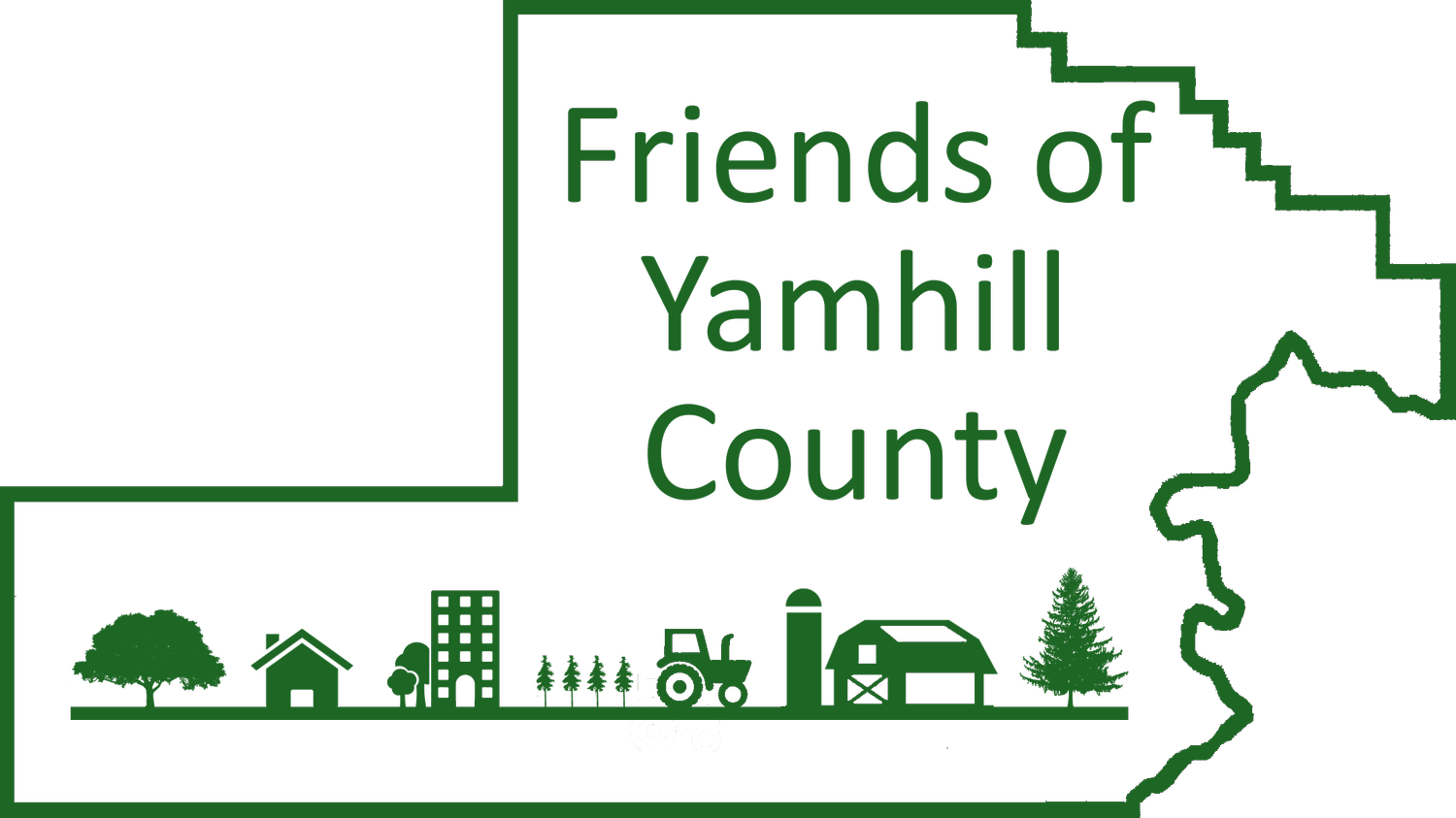
Key Land-Use Terms
Land Use seems to have its own language. Here’s your primer of key terms so you can start exercising your voice.
Comprehensive Plan – Every city in Oregon is required to have a comprehensive plan that establishes the overarching land use policy for the jurisdiction. The plan is created and updated through a public process, in accordance with the 19 statewide land use planning goals, and approved by the state. Comp plans are comprised of goals and policies and a map, which together set standards for how land is planned and zoned, and determine development patterns for decades at a time.
DLCD: Department of Land Conservation and Development – The agency within the State of Oregon’s Executive Branch that administers the Oregon land-use planning program.
EFU: Exclusive Farm Use – A land use zone (see “Zone,” below) intended to protect farmland by limiting land uses that may conflict with productive farm use of the land. Much of rural Yamhill County is zoned EFU, where it is called EF-20, EF-40, or EF-80.
Exception Area – This term is generally used to describe rural land that would be zoned for farm or forest use except that it was developed to the extent that productive resource use was no longer practical at the time the county was planning and zoning the land. Exception areas typically are zoned for rural residential, commercial, or industrial use. The term comes from a procedure where the county “takes an exception” to the statewide land use goal protecting farm or forest land, or both.
Land Use Planning – In Oregon, this refers to the intentional and regulated set of statewide laws, policies, and procedures that govern the management and development of non-federal and non-tribal lands. Counties and cities may have additional local land use planning systems, but they must align with the statewide system. With the passage of SB 100 in 1973, Oregon became the first state in the nation to implement such a comprehensive and forward-thinking system.
LCDC: Land Conservation and Development Commission – Members are appointed by the Governor to oversee the statewide land use planning program with DLCD (see above). It adopts state land-use planning goals, implements administrative rules governing the program, and coordinates state and local planning processes.
LUBA: Land Use Board of Appeals – An administrative panel, similar to a court, that hears appeals of most local land use decisions. Out of over 10,000 local land use decisions each year, only about 180 are appealed to LUBA. FYC will sometimes appeal a city or county land use decision to LUBA if it believes the decision does not comply with applicable land use laws.
SB 100: Senate Bill 100 – Passed in 1973 under the leadership of Governor Tom McCall, SB 100 established Oregon’s land use planning program and Statewide Land Use Planning Goals, requiring comprehensive plans and urban growth boundaries, and establishing the LCDC and DLCD (see above) for implementation.
UGB: Urban Growth Boundary – A boundary line around each city, established jointly by the city and county, and required to contain an adequate supply of land for all expected urban uses. The UGB is intended to prevent sprawl; to encourage compact, livable cities; and protect farm and forest land for resource production.
Zone – A designation applied to land by a city (inside city limits) or the county (outside city limits) that, in conjunction with the zoning ordinance, specifies what uses (such as residential, agricultural, commercial, or industrial) may be established along with development standards such as building setbacks, height limits, and parking requirements. All land is zoned and subject to zoning regulations.
What is Land Use Planning? More Resources
